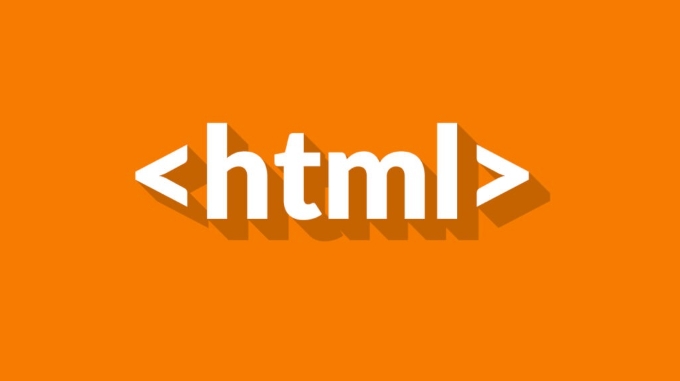To improve HTML5 page performance, you need to start from loading, rendering, and resource management. First, we need to reduce requests, compress resources, merge files, use CDNs and delay loading of pictures; second, we need to optimize rendering to avoid blocking scripts, reduce DOM operations, and optimize key rendering paths; third, we need to use cache and modern features, such as local storage, Service Workers, Web Workers, etc. to improve efficiency.

Improving HTML5 page performance is not only about writing good code, but also requires consideration from multiple perspectives such as loading, rendering, and resource management. The focus is on reducing requests, controlling resource size, and allowing browsers to process content as efficiently as possible.

Tips to reduce page loading time
Loading speed directly affects user experience and search engine rankings. There are several simple but effective ways:
- Compressing resources : Using Gzip or Brotli to compress HTML, CSS, and JavaScript files significantly reduces the transfer volume.
- Merge files : Merge multiple CSS or JS files into one to reduce the number of HTTP requests.
- Using CDN : Deploy static resources on servers closer to users to speed up loading.
- Lazy loading of pictures : Use
loading="lazy"attribute or Intersection Observer API to implement lazy loading of pictures, and load the content on the first screen first.
The easiest thing to ignore among these methods is "delayed loading", especially for pages with a lot of content. Reasonable use can significantly reduce the initial load burden.

Key points to improve rendering performance
Once the HTML5 page starts loading, the browser starts parsing and rendering. To make the page appear faster, you can pay attention to the following points:
- Avoid blocking rendered scripts : Try not to put
<script></script>inunless specifically needed.asyncordefercan be used to load scripts asynchronously. - Reduce DOM operations : Frequent operation of DOM will cause re-arrangement and redrawing, affecting performance. It is recommended to batch updates or use virtual DOM libraries.
- Optimize key rendering paths : Ensure that the order of HTML, CSS, and JS is reasonable, and priority is given to loading the resources required for the first screen.
For example, if you put a large volume of JS file at the top of the page and do not add defer or async , the entire page will be stuck until the script is executed.

Efficiency with cache and modern features
HTML5 provides many new features. Rational use can reduce server pressure and enable users to load faster when they access it again.
- Local cache policy : Use
localStorageorsessionStorageto store some unchanged data, such as configuration information, user status, etc. - Service Workers Cache Storage : Enables offline access and resource preloading, suitable for PWA applications.
- Web Workers handle complex tasks : If there is a lot of computing logic in the page, it can be placed in the Web Worker to prevent the main thread from being stuck.
For example, a weather app can store the city list in localStorage , so that you don’t need to pull it again every time you open it, which is both fast and saves traffic.
Basically that's it. HTML5 performance optimization is not something that can be achieved overnight. The key is continuous observation and gradual improvement. Although some details are small, such as the difference between defer and async , they are easily overlooked and have a great impact.
The above is the detailed content of HTML5 performance optimization tips. For more information, please follow other related articles on the PHP Chinese website!

Hot AI Tools

Undress AI Tool
Undress images for free

Undresser.AI Undress
AI-powered app for creating realistic nude photos

AI Clothes Remover
Online AI tool for removing clothes from photos.

Clothoff.io
AI clothes remover

Video Face Swap
Swap faces in any video effortlessly with our completely free AI face swap tool!

Hot Article

Hot Tools

Notepad++7.3.1
Easy-to-use and free code editor

SublimeText3 Chinese version
Chinese version, very easy to use

Zend Studio 13.0.1
Powerful PHP integrated development environment

Dreamweaver CS6
Visual web development tools

SublimeText3 Mac version
God-level code editing software (SublimeText3)

Hot Topics
 Audio and Video: HTML5 VS Youtube Embedding
Jun 19, 2025 am 12:51 AM
Audio and Video: HTML5 VS Youtube Embedding
Jun 19, 2025 am 12:51 AM
HTML5isbetterforcontrolandcustomization,whileYouTubeisbetterforeaseandperformance.1)HTML5allowsfortailoreduserexperiencesbutrequiresmanagingcodecsandcompatibility.2)YouTubeofferssimpleembeddingwithoptimizedperformancebutlimitscontroloverappearanceand
 What is the purpose of the input type='range'?
Jun 23, 2025 am 12:17 AM
What is the purpose of the input type='range'?
Jun 23, 2025 am 12:17 AM
inputtype="range" is used to create a slider control, allowing the user to select a value from a predefined range. 1. It is mainly suitable for scenes where values ??need to be selected intuitively, such as adjusting volume, brightness or scoring systems; 2. The basic structure includes min, max and step attributes, which set the minimum value, maximum value and step size respectively; 3. This value can be obtained and used in real time through JavaScript to improve the interactive experience; 4. It is recommended to display the current value and pay attention to accessibility and browser compatibility issues when using it.
 Adding drag and drop functionality using the HTML5 Drag and Drop API.
Jul 05, 2025 am 02:43 AM
Adding drag and drop functionality using the HTML5 Drag and Drop API.
Jul 05, 2025 am 02:43 AM
The way to add drag and drop functionality to a web page is to use HTML5's DragandDrop API, which is natively supported without additional libraries. The specific steps are as follows: 1. Set the element draggable="true" to enable drag; 2. Listen to dragstart, dragover, drop and dragend events; 3. Set data in dragstart, block default behavior in dragover, and handle logic in drop. In addition, element movement can be achieved through appendChild and file upload can be achieved through e.dataTransfer.files. Note: preventDefault must be called
 How can you animate an SVG with CSS?
Jun 30, 2025 am 02:06 AM
How can you animate an SVG with CSS?
Jun 30, 2025 am 02:06 AM
AnimatingSVGwithCSSispossibleusingkeyframesforbasicanimationsandtransitionsforinteractiveeffects.1.Use@keyframestodefineanimationstagesforpropertieslikescale,opacity,andcolor.2.ApplytheanimationtoSVGelementssuchas,,orviaCSSclasses.3.Forhoverorstate-b
 HTML audio and video: Examples
Jun 19, 2025 am 12:54 AM
HTML audio and video: Examples
Jun 19, 2025 am 12:54 AM
Audio and video elements in HTML can improve the dynamics and user experience of web pages. 1. Embed audio files using elements and realize automatic and loop playback of background music through autoplay and loop properties. 2. Use elements to embed video files, set width and height and controls properties, and provide multiple formats to ensure browser compatibility.
 What is WebRTC and what are its main use cases?
Jun 24, 2025 am 12:47 AM
What is WebRTC and what are its main use cases?
Jun 24, 2025 am 12:47 AM
WebRTC is a free, open source technology that supports real-time communication between browsers and devices. It realizes audio and video capture, encoding and point-to-point transmission through built-in API, without plug-ins. Its working principle includes: 1. The browser captures audio and video input; 2. The data is encoded and transmitted directly to another browser through a security protocol; 3. The signaling server assists in the initial connection but does not participate in media transmission; 4. The connection is established to achieve low-latency direct communication. The main application scenarios are: 1. Video conferencing (such as GoogleMeet, Jitsi); 2. Customer service voice/video chat; 3. Online games and collaborative applications; 4. IoT and real-time monitoring. Its advantages are cross-platform compatibility, no download required, default encryption and low latency, suitable for point-to-point communication
 How to check if a browser can play a specific video format?
Jun 28, 2025 am 02:06 AM
How to check if a browser can play a specific video format?
Jun 28, 2025 am 02:06 AM
To confirm whether the browser can play a specific video format, you can follow the following steps: 1. Check the browser's official documents or CanIuse website to understand the supported formats, such as Chrome supports MP4, WebM, etc., Safari mainly supports MP4; 2. Use HTML5 tag local test to load the video file to see if it can play normally; 3. Upload files with online tools such as VideoJSTechInsights or BrowserStackLive for cross-platform detection. When testing, you need to pay attention to the impact of the encoded version, and you cannot rely solely on the file suffix name to judge compatibility.
 How to create animations on a canvas using requestAnimationFrame()?
Jun 22, 2025 am 12:52 AM
How to create animations on a canvas using requestAnimationFrame()?
Jun 22, 2025 am 12:52 AM
The key to using requestAnimationFrame() to achieve smooth animation on HTMLCanvas is to understand its operating mechanism and cooperate with Canvas' drawing process. 1. requestAnimationFrame() is an API designed for animation by the browser. It can be synchronized with the screen refresh rate, avoid lag or tear, and is more efficient than setTimeout or setInterval; 2. The animation infrastructure includes preparing canvas elements, obtaining context, and defining the main loop function animate(), where the canvas is cleared and the next frame is requested for continuous redrawing; 3. To achieve dynamic effects, state variables, such as the coordinates of small balls, are updated in each frame, thereby forming






